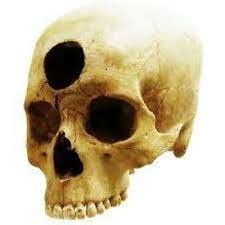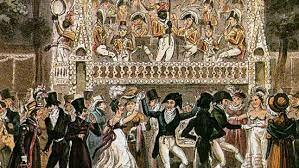-
 Illness and diseases were
Illness and diseases were
Caused by evil spirits and demons
a punishment from the Gods
Tribal witch doctors treated illness with ceremonies
Herbs and plants used as medicines (morphine and digitalis)
Trepanation or trephining (surgically removing a piece of bone from the skull)
Average life span was 20 years -
 Physicians were priests
Physicians were priests
Health Records were first recorded by the ancient Egyptians
Bloodletting or leeches used as medical treatment
Average life span was 20-30 years -
 Believed in the need to treat the whole body by curing the spirit and nourishing the body
Believed in the need to treat the whole body by curing the spirit and nourishing the body
Recorded a pharmacopoeia of medications based mainly on the use of herbs
Used therapies such as acupuncture
Began to search for medical reasons for illness
Average life span was 20-30 years -
 Hippocrates (Father of Medicine) and other physicians
Hippocrates (Father of Medicine) and other physicians
First to observe the human body and the effects of disease – led to modern medical sciences.
Believed illness is a result of natural causes
Used therapies such as massage, art therapy, and herbal treatment
Stressed diet, hygiene and exercise as ways to prevent disease
Average life span was 25-35 years -
 First to organize medical care by providing care for injured soldiers
First to organize medical care by providing care for injured soldiers
Later hospitals were religious and charitable institutions in monasteries and convents
First public health and sanitation systems by building sewers and aqueducts
Galen established belief that the body was regulated by four body humors; blood, phlegm, black bile, and yellow bile
Life span was 25-35 years -
 Emphasis on saving the soul and study of medicine was prohibited
Emphasis on saving the soul and study of medicine was prohibited
Prayer and divine intervention were used to treat illness & disease
Monks and priests provide custodial care for sick people
Medications were mainly herbal mixtures
Average life span was 20-30 years
Disease Cause still blamed on circumstance, but no understanding -
 Renewed interest in medical practices of Greek and Romans
Renewed interest in medical practices of Greek and Romans
1100: Arabs began requiring physicians pass examinations and obtain licenses
1346-1353: Bubonic Plague killed 75% of population in Europe and Asia
Major diseases included
smallpox, diphtheria, tuberculosis, typhoid, the plaque, and malaria
1220-1255: Medical Universities were established
Average life span was 20-35 years -
 Rebirth of Science of Medicine
Rebirth of Science of Medicine
Body Dissections led to increased understanding of anatomy and physiology
1440: Invention of printing press allowed medical knowledge to be shared
1543: First anatomy book was published by Andreas Vesalius (1514-1564)
Average life span was 30-40 years
Disease cause STILL a mystery -
 Knowledge regarding the human body GREATLY increased
Knowledge regarding the human body GREATLY increased
1500’s: Ambroise Pare, a French surgeon, known as the Father of Modern Surgery established use of ligatures to stop bleeding
1600’s: Apothecaries (early pharmacists) made, prescribed, and sold medications
1670: Invention of the microscope
Allowed physicians to see disease-causing organisms.
HUGE advancement
Average life span 35-45 years
Cause of disease still not known – many people died from infections
Some enlightenment though due to -
 1714: Gabriel Fahrenheit (1686-1736) created the first mercury thermometer
1714: Gabriel Fahrenheit (1686-1736) created the first mercury thermometer
1760: Benjamin Franklin invented bifocals
1778: John Hunter established scientific surgical procedures and introduced tube feeding
1798: Smallpox vaccine discovered
Average life span 40-50 years -
 1901: ABO blood groups discovered
1901: ABO blood groups discovered
Found out how white blood cells protect against disease
New medications were developed
1922: Insulin discovered and used to treat diabetes
1928: Antibiotics developed to fight infections (penicillin)
New machines developed
1943: Kidney Dialysis Machine
1953: Heart Lung Machine
Surgical and diagnostic techniques developed to cure once fatal conditions
1953: Structure of DNA discovered and research in gene therapy begins -
 Rapid advancements due to discoveries of microorganisms, anesthesia, and vaccinations
Rapid advancements due to discoveries of microorganisms, anesthesia, and vaccinations
1895: X-Ray Machine Developed
1893: First Open Heart Surgery
Infection control developed once microorganisms were associated with disease
1816: Invention of the stethoscope
1860: Formal training for nurses began
Women became active participants in health care
Average life span 40-60 years -
 1956: First Bone Marrow Transplant
1956: First Bone Marrow Transplant
Initiated Embryonic Stem Cell Research
1978: Test tube babies
Organ Transplants
1960: Kidney
1963: Liver
1967: Heart
1982: Artificial Heart
